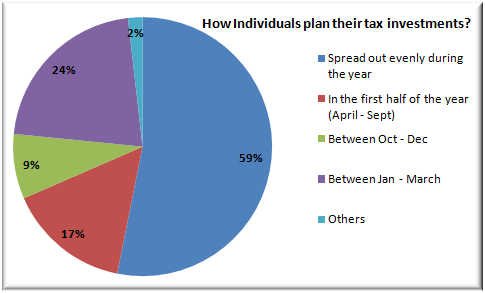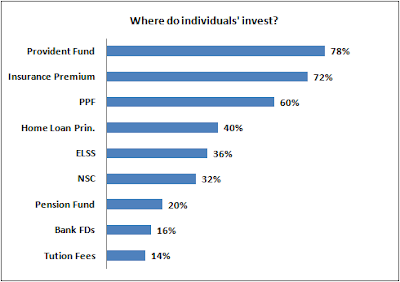Main Tables
Honourable Finance Minister started his tax proposals with the words “In the formulation of these proposals, my priorities are directed towards making taxes moderate, payments simple for the taxpayer and collection of taxes easy for the tax collector”. However, these priorities were not reflected in this year’s budget. Atleast not for the individual tax payers. One of the reasons may be the implementation of Direct Tax Code (DTC) from next year. Since major changes and rationalization of slabs are expected to happen in DTC, there has not been any tweaking with the tax rates this year. The basic exemption limits has been moderately hiked from existing Rs. 1,60,000 for males to Rs. 1,80,000. This will lead to a nominal tax saving of Rs 2,060 for male individuals. However, their female counterparts are not so lucky with nothing in store for them this time. The tax slabs and rates remains the same for them and hence there will be no change in their tax liabilities.
Investment in New Pension Scheme (NPS) was made tax-free couple of years back when it was brought under the investment limits of Rs 1,00,000 under Section 80C. Such investments up to 10% of the employee’s salary were included for calculation of Rs. 1,00,000 limit. This amount can be either by employee investing himself or employer contributing to NPS on employee’s behalf. Now, the employer’s contribution is proposed to be removed from Rs. 1,00,000 limit. This means that amount invested by employer in NPS on behalf an employee, subject to the cap of 10% of the salary, will be allowed as deduction over and above Rs. 1,00,000 limits under Section 80C. Further such employer’s contributions will also be allowed as business expenditure for the companies. This will encourage investments in New Pension Scheme.
The benefit under Section 80CCF of Rs. 20,000 invested in infrastructure bonds is extended for additional one year.
Another welcome change is doing away with the requirement of filing of Income Tax return in case the tax has been deducted by employer. In post-budget press conference, CBDT Chairman Sudhir Chandra hinted that salaried individuals having income up to Rs. 5 lakh need not file the return. If the individual wishes to opt for this, he needs to disclose his other income such as interest, etc to the employer for tax deduction. However, in case individuals have any other sources of income such as capital gains or house property income, they needs to file the return with the tax authorities. More clarity on this is expected to emerge in coming months.
This post was also carried in Mumbai edition of DNA of 1st March 2011.
This post was also carried in Mumbai edition of DNA of 1st March 2011.



